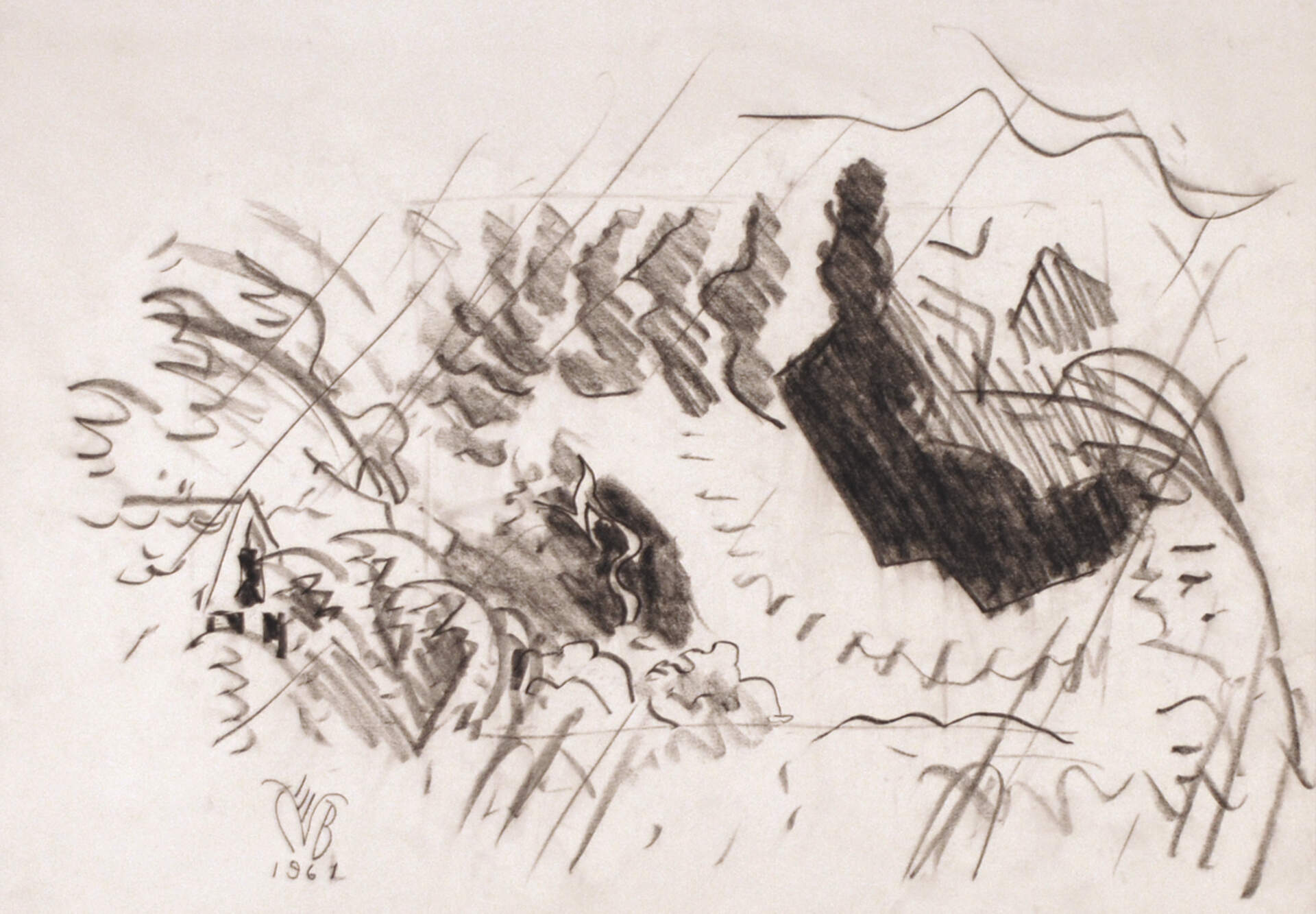Charles E. Burchfield (1893-1967)Study F for "The Moth and the Thunderclap"
1961
conté crayon on paper
13 3/4 x 19 7/16 inches
The Charles Rand Penney Collection of Work by Charles E. Burchfield, 1994
In The Moth and The Thunderclap, Charles Burchfield relived his sublime childhood memory: “…there was a flash of lightning and clap of thunder from out of the heavy clouds above. Never having experienced such a thing before, to my childish mind it seemed like an impossible, a miraculous event.” In studies and the final painting, he depicts the wild, cacophonous evening snowstorm with dramatic, synesthetic motifs for the simultaneous pink flash of light and sonic boom with a backdrop of wind-bent trees, streaks of heavy wet snow, and an overwhelmed house. Eventually he added a nearly life-sized Cecropia moth in the foreground as a realistic counterpoint to the abstraction.
While some scholars think Burchfield’s depictions of primordial, apocalyptic storms may be linked to “Thunderstorm,” the fourth movement of Beethoven’s Pastoral Symphony; we know the artist was inspired by numerous musical compositions. In 1930, he associated Sibelius’s Second Symphony with the visual effects of a blizzard, in which “the wonder and mystery of nature” were reborn in “a flash of pink lightning and a clap of thunder.” He wrote: “Its power & beauty overwhelms me ― what a magnificent genius is Sibelius ― All the torture of barrenness and indecision that this autumn assailed me are dissolved in this elemental music ― pictures and ideas pour in upon me ― my joy is almost too great to be borne.” —NW
